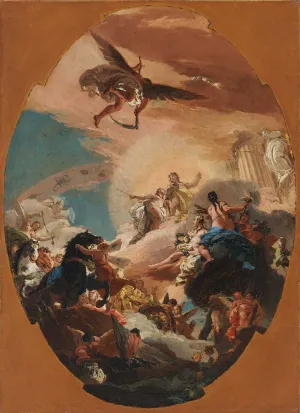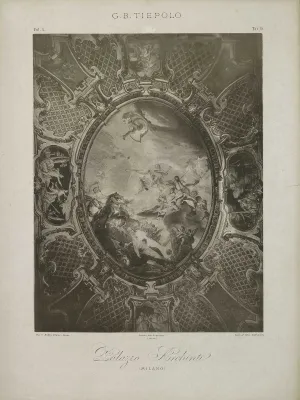Apollo and Phaëton
Giambattista Tiepolo (1696–1770)
Apollo and Phaëton, ca. 1730–31
Oil on canvas
25 1/4 × 18 3/4 in. (64.1 × 47.6 cm)
Los Angeles County Museum of Art
Tiepolo set this scene in the dwelling of the Sun, described by Ovid as decorated with high columns and resplendent in golden light. Two winged figures close the composition at top and bottom. Above is Saturn, the god of Time, swooping down from the sky, holding his scythe. On the ground, fast asleep, is Morpheus, god of slumber, accompanied by another winged, sleeping figure.
Giambattista Tiepolo (1696–1770)
Apollo and Phaëton, ca. 1730-31 (destroyed 1943)
From Attilio Centelli and Gerardo Molfese, Gli affreschi di G.B. Tiepolo raccolti da Gerardo Molfese con uno studio di Attilio Centelli (Turin, 1897), pl. 9
Page from unbound book
23 1/2 × 17 5/8 in. (598 × 448 mm)
Azienda di Servizi alla Persona Golgi-Redaelli, Milan
su autorizzazione dell'Azienda di Servizi alla Persona Golgi-Redaelli di Milano
The compositions of the final Archinto fresco and that of the Los Angeles sketch are almost identical. The positions of Autumn and Winter vary slightly, with the two figures closer together in the fresco. The depiction of sunflowers is also altered, as is the position of Phaëton's proper right arm. He holds the whip at a different angle.


